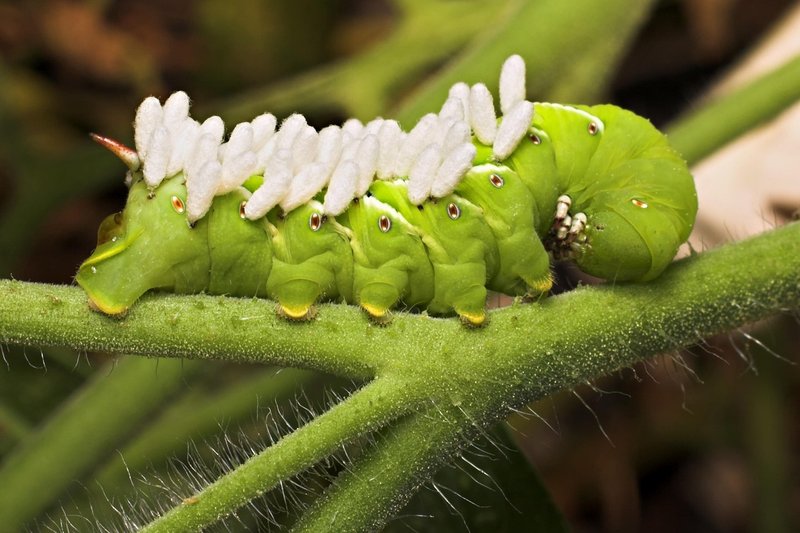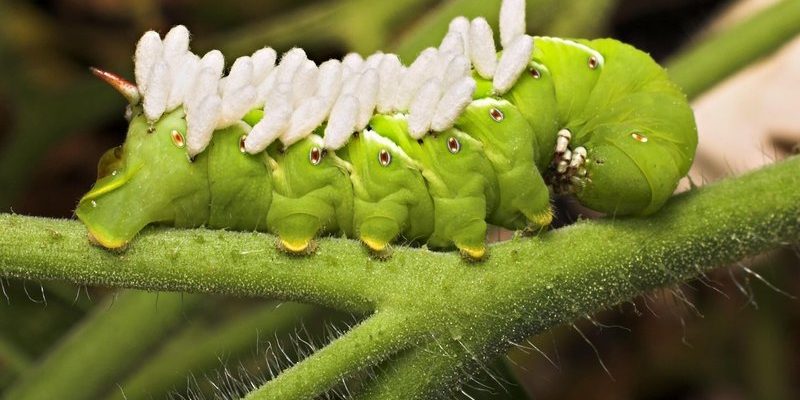
Hornworms are the larvae of the hawk moth, and they’re not just any ordinary pests. Picture a garden party where only the most select guests have shown up—a select group that eats your prized tomato and pepper plants as if they’re going out of style. Understanding the reasons for their rapid population growth can help you protect your garden while keeping things in perspective. So, what’s going on with these little munchers?
What Are Hornworms?
To understand the hornworm population spikes, we first need to know what hornworms actually are. As caterpillars, they come from moths belonging to the family Sphingidae, which is why they’re also known as sphinx moths. They have a distinct look—large, green bodies with a distinctive horn-like protrusion on their tail end. This horn isn’t just for show; it can help deter predators.
Hornworms primarily feed on plants in the nightshade family, which includes tomatoes, peppers, and eggplants. They start small but can grow up to 4 inches long, making them quite hefty for a caterpillar. What’s more? They can eat a vast amount of foliage in a short time, which is often why gardeners are alerted to their presence when plants begin to look ragged and stressed.
Here’s the thing: hornworms don’t just appear out of nowhere. They go through a lifecycle that involves several stages, including eggs, larvae (the stage we’re discussing), pupae, and adults. Understanding their lifecycle helps us grasp why their numbers can spike dramatically at certain times.
What Causes Hornworm Population Spikes?
Several factors contribute to the dramatic spikes in hornworm populations. By identifying these elements, you can be better prepared to deal with them. Let’s break them down.
1. Optimal Environmental Conditions
Hornworms are like little green party animals that thrive in perfect weather. Warm temperatures and adequate moisture create a favorable environment for them. When spring rolls in, and the temperatures rise, hornworm eggs laid by adult moths hatch quickly.
Also, abundant rainfall can lead to lush plant growth, providing plenty of food for the hatchlings. As they munch, they grow, and their numbers swell, creating a perfect storm of hornworm activity in your garden. It’s a cycle of abundance that can be hard to manage.
2. Abundance of Host Plants
Another major contributor to hornworm population spikes is the availability of host plants. If your garden is filled with nightshades, you’re essentially hosting a buffet for these critters. They particularly love tomatoes, so if you’ve planted a patch of them, prepare to potentially host a hornworm gathering.
When there’s an abundant food source, hornworms can reproduce and thrive like nobody’s business. You might think, “Why not just remove a few plants?” but that’s not always practical. The key is to find a balance where your plants can thrive without becoming hornworm appetizers.
3. Natural Predators and Parasites
Believe it or not, hornworms do have enemies in nature! Wasps, birds, and even certain beetles can keep hornworm populations in check. However, if these natural predators aren’t around—because of pesticides or habitat loss, for example—hornworm populations can explode.
For instance, some wasps will lay their eggs inside hornworms, and when those eggs hatch, the wasp larvae eat the hornworm from the inside out. Gross, but effective! If these natural predator populations dip, you might suddenly find yourself overwhelmed by hornworms.
How to Manage Hornworm Populations
Now that we understand what causes hornworm population spikes, let’s talk about how to manage them. You can’t always prevent their arrival, but you can take proactive steps to limit their impact.
1. Regular Inspections
Keeping an eye on your plants is crucial. Regularly inspect the undersides of leaves for eggs or small hornworms. The earlier you catch them, the less damage they’ll do. Trust me, finding a small caterpillar is much easier than dealing with a fully grown hornworm!
While you’re at it, consider hand-picking any hornworms you see and relocating them away from your garden. It’s a simple yet effective method that gives you a bit of control over the situation.
2. Encourage Beneficial Insects
Creating a garden that encourages beneficial insects can help naturally control hornworm populations. Plant flowers that attract wasps and other predatory insects, like marigolds or dill. These predators will help keep hornworm numbers down without the need for busy pesticides.
You might also consider reducing the use of chemicals in your yard to maintain a healthy ecosystem. A diverse garden attracts a variety of wildlife, which can contribute to natural pest control.
3. Natural Pesticides
If the hornworm problem gets out of control, you might have to step in with some natural pesticides. Bacillus thuringiensis (Bt) is a popular option among organic gardeners. It’s a bacterium that specifically targets caterpillars like hornworms while being safe for other wildlife.
When using any pesticide, even a natural one, be sure to follow the instructions carefully to avoid harming your plants or beneficial insects.
Hornworm population spikes can be puzzling, but now you have a clearer picture of why they happen. By understanding factors like environmental conditions, host plant availability, and natural predators, you can better prepare for their arrival. Remember to inspect your plants regularly, encourage beneficial insects, and don’t hesitate to use natural remedies if needed.
Your garden is a labor of love, so don’t let hornworms be the party crashers that ruin your hard work. With a little vigilance and some proactive measures, you can keep your plants thriving and fend off those pesky pests. Enjoy nurturing your green space and watching it grow, knowing you’re ready for whatever nature throws your way!

